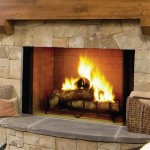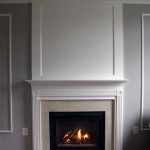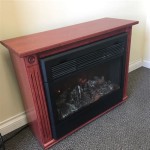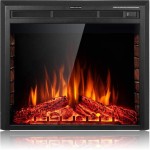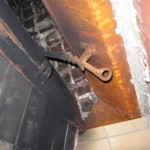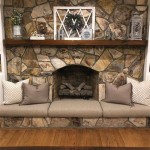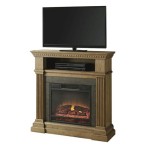Heat N Glo Fireplace Pilot Light Adjustment: A Comprehensive Guide
Heat N Glo fireplaces offer a combination of warmth and aesthetic appeal, providing efficient heating solutions for homes. A crucial component of ensuring consistent operation of a Heat N Glo fireplace is the pilot light. The pilot light serves as a constant ignition source, ready to ignite the main burner when heat is required. Maintaining a properly adjusted pilot light is essential for preventing operational issues and ensuring safe functioning of the fireplace. This article provides a detailed guide to understanding and adjusting the pilot light on a Heat N Glo fireplace.
A malfunctioning or improperly adjusted pilot light can manifest in several ways. These include the pilot light frequently extinguishing, difficulty in igniting the main burner, a weak or flickering pilot flame, or the fireplace failing to ignite altogether. Addressing these issues promptly is crucial to prevent further complications and to maintain the efficiency and safety of the appliance. Incorrect adjustment can lead to incomplete combustion, potentially resulting in carbon monoxide production. Therefore, understanding the proper adjustment procedures is paramount.
Understanding the Pilot Light Assembly
Before attempting any adjustment, it's important to understand the components of the pilot light assembly. Typically, a Heat N Glo pilot assembly includes the pilot burner, a thermocouple or thermopile, and a pilot gas line. The pilot burner is the small nozzle where the gas is ignited to create the pilot flame. The thermocouple or thermopile is a safety device that generates a small electrical current when heated by the pilot flame. This current keeps the main gas valve open, allowing the main burner to ignite. The pilot gas line supplies gas to the pilot burner from the main gas valve.
The thermocouple and thermopile differ slightly in function. A thermocouple generates a smaller voltage, typically requiring a cleaner pilot flame for consistent operation. A thermopile generates a larger voltage and is generally more tolerant of slight variations in the pilot flame. Identifying which component is present in the specific Heat N Glo model is important for troubleshooting and maintenance.
Regular inspection of these components is recommended. Check for any signs of corrosion, damage, or debris that may be obstructing the pilot burner or interfering with the electrical connection of the thermocouple or thermopile. Cleaning the pilot assembly, as described later, is an important step in maintaining optimal performance.
Steps for Adjusting the Pilot Light
Adjusting the pilot light requires careful attention and a methodical approach. Prior to beginning any adjustment, ensure that the gas supply to the fireplace is turned off. This is a crucial safety precaution to prevent accidental gas leaks or explosions. Locate the gas shut-off valve, usually near the fireplace or gas supply line, and turn it to the "off" position.
Next, access the pilot light assembly. This usually involves removing the fireplace's front panel or decorative components. Consult the Heat N Glo fireplace owner's manual for specific instructions on accessing the pilot assembly for the specific model. Different models might have variations in the removal process. Once the assembly is accessible, visually inspect the pilot light and surrounding area for any obstructions or debris.
Locate the pilot light adjustment screw. This screw is typically located near the pilot burner or on the gas valve itself. It controls the amount of gas flowing to the pilot burner. Using a small screwdriver, carefully turn the adjustment screw. Turning the screw clockwise generally decreases the gas flow, while turning it counterclockwise increases the gas flow. Make small adjustments, and after each adjustment, relight the pilot light.
Observe the pilot flame carefully. A properly adjusted pilot flame should be steady, blue in color, and enveloping the thermocouple or thermopile. If the flame is yellow, flickering, or too small, it indicates that the gas flow needs to be increased slightly. If the flame is excessively large or noisy, it indicates that the gas flow needs to be decreased.
After making an adjustment, allow the pilot light to burn for several minutes to stabilize. Then, attempt to ignite the main burner. If the main burner ignites reliably and burns steadily, the pilot light adjustment is likely correct. If the main burner fails to ignite or ignites intermittently, further adjustments may be necessary.
Troubleshooting Common Issues
Several common issues can prevent a pilot light from operating correctly. One common problem is a dirty pilot burner. Over time, dust, debris, and carbon deposits can accumulate on the pilot burner, obstructing the gas flow and causing a weak or unstable pilot flame. To clean the pilot burner, use a small brush or compressed air to remove any debris. A specialized pilot orifice cleaning tool can be helpful for removing stubborn deposits.
Another common issue is a faulty thermocouple or thermopile. If the pilot light ignites but extinguishes after releasing the pilot button, it may indicate a faulty thermocouple or thermopile. To test the thermocouple or thermopile, use a multimeter to measure the voltage output while the pilot light is burning. The voltage should be within the range specified in the Heat N Glo fireplace owner's manual. If the voltage is outside the specified range, the thermocouple or thermopile may need to be replaced.
A blocked pilot gas line can also cause problems with the pilot light. If the gas line is blocked, it will restrict the gas flow to the pilot burner, resulting in a weak or non-existent pilot flame. To check for a blocked gas line, disconnect the line from the gas valve and blow compressed air through it. If there is significant resistance, it indicates a blockage that needs to be cleared. If the blockage persists, it may necessitate professional assistance from a qualified gas appliance technician.
When troubleshooting, always refer to the Heat N Glo fireplace owner's manual for specific instructions and troubleshooting tips for the particular model. If the problem persists, consulting with a qualified gas appliance technician is recommended. Attempting repairs without sufficient knowledge or experience can be dangerous and may void the fireplace's warranty.

How To Adjust Flame Height On A Heat Glo 6000c

Fireplace Pilot Light Tutorial

Gas Fireplace Adjustment Without Hi Low Switch Doityourself Com Community Forums

Gas Fireplace Low Flame Doityourself Com Community Forums

Heat Glo Gas Fireplace Operation

Gas Fireplace Low Flame Doityourself Com Community Forums

Relighting Your Heat Glo Standing Pilot Fireplace
Viewing A Thread Converting Lp Gas Fireplace To Nat

Helpful Resources

Heat Glo Gas Fireplace Troubleshooting
Related Posts


